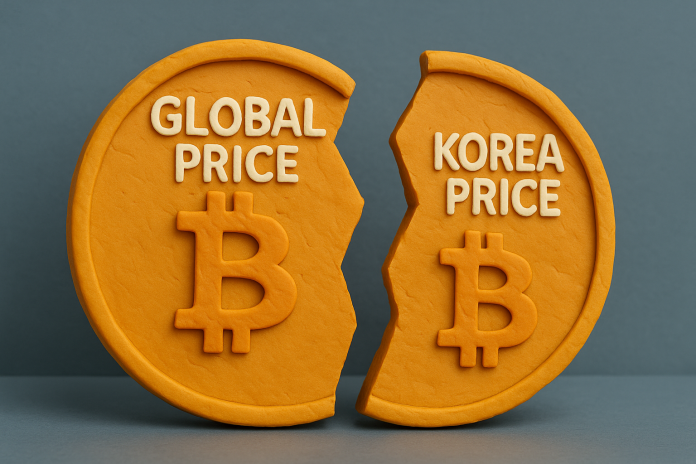
Bitcoin has once again captured the spotlight by hitting an all-time high, but in a twist of irony, South Korean prices remain lower than global averages—highlighting the emergence of a so-called “reverse kimchi premium.”
On July 14 (local time), Bitcoin surged past $120,000 on major global exchanges, equivalent to over ₩162 million. On South Korea’s Upbit exchange, it peaked near ₩166 million, setting a new record. However, shortly thereafter, Korean prices fell to around 1.5% below global rates, resulting in a gap of up to ₩2 million—a phenomenon known as the reverse kimchi premium, where Korean prices lag behind international ones.
Several structural factors explain this discrepancy. First, trading volume in Korea has significantly declined. Upbit’s average daily transaction volume dropped by approximately 45% in Q2 compared to Q1, a steeper drop than Binance’s 30% decline over the same period. This points to weakened buying sentiment among Korean investors.
Second, institutional participation in Korea remains limited. Due to regulatory restrictions, corporate entities cannot yet obtain real-name accounts for crypto trading, preventing direct access by funds and institutions. In contrast, global markets are seeing inflows from institutional investors, driven by ETF approvals and clearer regulations.
Third, Korean investors increasingly prefer overseas platforms that offer leverage, margin trading, and a wider range of derivatives. This shift is accelerating capital outflows from the domestic market.
Despite these trends, the reverse premium may not last long. Korean regulators plan to begin a pilot program allowing institutional real-name accounts in the second half of this year. Around 3,500 registered professional investment firms are eligible, which could open the door for large capital inflows and help close the price gap.
This price divergence is not just about short-term demand and supply—it’s a structural reflection of Korea’s crypto infrastructure and regulatory environment. But it also signals that, with policy evolution and better access, the Korean market could naturally re-align with global trends.






